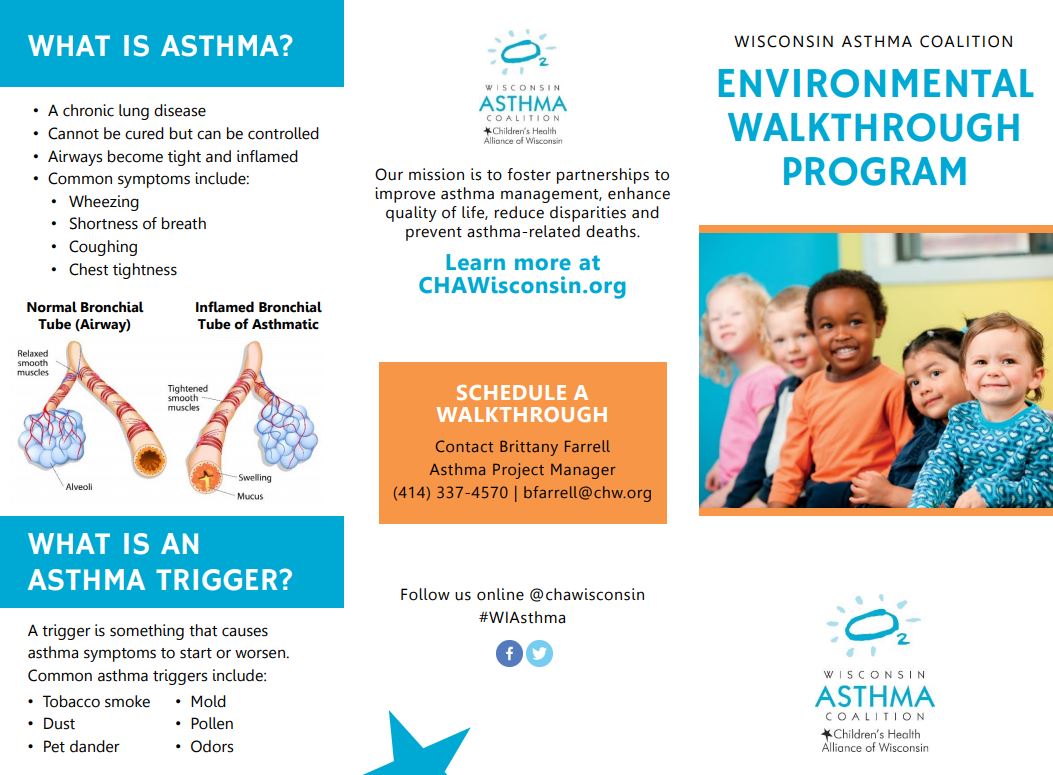The arrival of spring is accompanied by the arrival of added asthma triggers. Children are impacted by these triggers in their everyday school and childcare center environments. Taking control of asthma doesn’t have to be cumbersome, though, through the process of Integrated Pest Management.
Taking control of asthma in a school or childcare center starts with identifying the triggers that are present. School and childcare organizations can accomplish this by utilizing the Wisconsin Asthma Coalition’s School and Childcare Walkthrough program to make their environment more asthma-friendly.
The purpose of the Wisconsin Asthma Coalition (WAC) walkthrough program is to decrease asthma symptoms in children by reducing exposure to environmental asthma triggers found within the childcare setting. One in 13 Wisconsin Children have asthma, so identifying the triggers are important.
“Children spend over 1,000 hours a year in school and are often in the same classroom throughout the day. If there are triggers present, kids will be affected all day long and will end up being absent, which impacts their ability to learn,” says Brittany Farrell, Project Manager for the Asthma Initiative at Children’s Health Alliance of Wisconsin.
“The walkthrough program helps reduce asthma triggers like pests by identifying potential entry points or objects that attract them, and then educating facility personnel on how to fix the entry points or remove those objects.”
Cockroaches and other pests in the classroom can cause allergic reactions and/or trigger asthma symptoms in students sensitive to these allergens. Finding these pests isn’t always obvious. The pest droppings, urine, skin and decaying body parts are evidence of pests in classrooms but aren’t always easy to see.
If these triggers are present, the best approach to manage the pests is to implement an integrated pest management (IPM) system. The Centers for Disease Control and Prevention (CDC) and American Academy of Pediatrics recommend IPM for reducing asthma.
“For schools, integrated pest management is the safest and most cost-effective form of pest management,” says Valerie McGoldrick, Community IPM Coordinator at the IPM Institute of North America, Inc. “Kids need a safe learning environment that is free of pests and pesticides, and that starts with IPM.”
IPM has obvious environmental benefits, but it benefits schools and childcare centers in more ways than one. In some cases, IPM has saved organizations up to $32,000 a year compared to conventional pest management practices.
Pest Defense for Health Schools offers free online trainings for school IPM as well as in-person training, school-specific IPM plans and certification on school IPM.
Learn more about IPM from McGoldrick on March 18 by listening to her webinar in partnership with the Wisconsin Asthma Coalition. McGoldrick will cover how to identify and spot pests and how to reduce them without using pesticides in schools, homes and hospitals.


